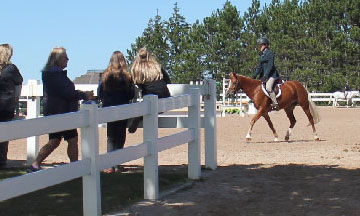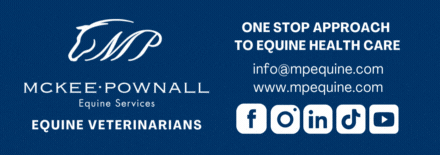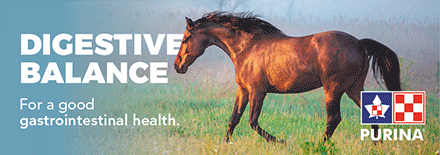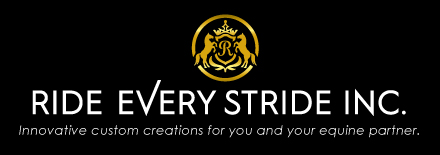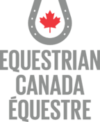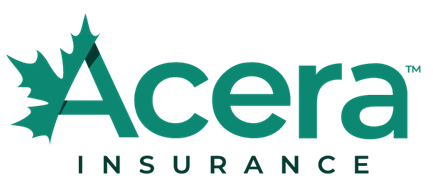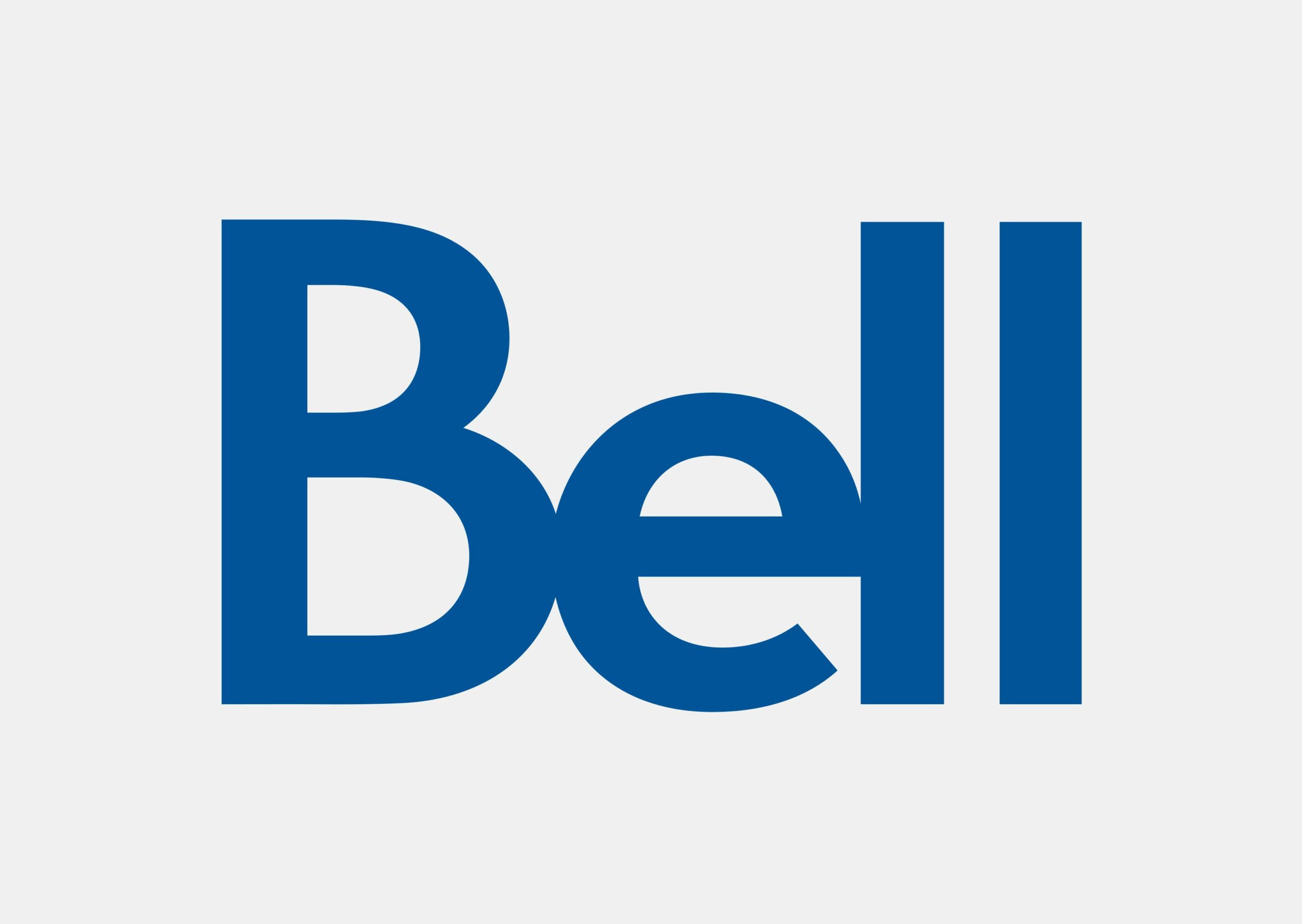By Marguerite Old
As a registered equine massage therapist, I have found that it is not always easy to find conferences that are geared specifically to what I do every day, which in my case is often treating the muscles of your horse’s back.
When I learned that Horses Inside Out in Great Britain was hosting a conference based on the theme “The Back and Beyond,” it seemed like an opportunity to expand my knowledge that I couldn’t miss. So, for two days on Feb. 22-23, I found myself “across the pond” at the Royal Agricultural University in Cirencester, Great Britain, to take it all in.
For those of you who may have missed them on social media, Horses Inside Out is an organization that uses colourful videos, photos and live demonstrations to give fascinating insight into equine locomotion from the perspective of what’s happening on the inside. Gillian Higgins, a sports and remedial therapist, equine massage therapist and British Horse Society coach, founded the organization in 2006 and her lectures are in demand all over the world. With bright paint and artistic flair, she brings the inside of horses to life on the “outside.”
Her team says the conference grows each year and in 2014 they secured an impressive lineup of top veterinarians to delve into the evolution, biomechanics and health of the equine back. They also took this theme a step further to include an Olympic trainer’s approach to training for good back health, and examined the possibility that symptoms of back pain may be stemming from gastric ulcers. The importance of understanding core stability for riders was also touched on.
In addition to the content, what impressed me the most was the collegial atmosphere and the diversity of the 200 fellow attendees. I met and shared experiences with equine bodyworkers, saddle fitters, coaches and veterinary professionals from all over Europe, Western Canada, the U.S. and, of course, Great Britain. All were educated, positive and extremely keen to learn. It was reinforced to me that our profession is not only growing in Canada, but in many other countries as well.
There is so much to choose from to share, however I have trimmed it down to the concepts that resonated with me the most.
Dr. Theresia Licka, MRCVS, University of Veterinary Medicine, Vienna, presented on the Influence of Lameness and Reduced Vertebral Movement on the Function of the Back. She described that the most important role of the back is to couple the movement of the forelimbs and hindlimbs and to provide stability at all gaits so that excessive vertebral rotation and flexion (and therefore damage) does not occur.
If there is lameness present, the back has to take on an additional function, which is to aid in distributing forces from the painful limb to the non-painful limb. For example, when one hindlimb compensates for lameness in the opposite hindlimb the rotation of the pelvis becomes asymmetrical and the back rotates slightly towards the sound limb throughout most of the motion cycle. This creates a large strain on most back muscles and the muscles of the trunk also take on additional work in order to stabilize this rotation.
If the compensation is occurring between a hindlimb and a forelimb, the back muscles must become rigid for this transfer of energy to occur. This rigidity is caused by continuous muscle contraction, which is detrimental to circulation and saddle fit. Over time it will decrease the mobility of the intervertebral junctions.
As an REMT, what I take away from Dr. Licka’s findings is that it is possible for me to assist owners, coaches and trainers in detecting early signs of lameness. If horses are massaged regularly I can watch for sudden changes in back musculature. Veterinary care can then be arranged before the problem worsens. As well, massage can be a useful modality to assist in recuperation from these issues and to overcome the muscle splinting patterns that may develop as a result of them.
Dr. Sue Dyson, Vet MB, PhD, addressed the subject of diagnosing primary back pain, which can often look like lameness. What can make this process more perplexing, especially from what we know from Dr. Licka’s presentation, is that these problems may, and often do, co-exist.
I’ll highlight a few methods that Dr. Dyson stressed were very important to her during diagnosis. Observing the horse while being ridden, hopefully by its regular rider is a crucial part of the exam. It should perform all of its normal tasks and should include being ridden at a sitting trot, as a horse with back pain is more likely to alter rhythm and speed during this exercise. Lunging in circles at all gaits, a tack assessment and a careful, skilled palpation were also imperative, as was ruling out rider crookedness. Of course, after the physical and manual observations, appropriate imaging with radiographs, ultrasound and/or scintigraphy, etc. may be required to get to the root of things.
I was pleased to hear Dr. Dyson include manual bodywork/physiotherapy as part of the physical assessment of the back, with the goal being to relieve the pain so that the underlying lameness could become more visible and, therefore, treatable.
I’d like to close out by sharing some thoughts from Dr. Wilfried Bechtolsheimer, Olympic Dressage Coach. Dr. “B” as he is affectionately known, coached his daughter Laura and her horse, Mistral Hojris, to Olympic Team Gold and Individual Bronze for Great Britain at the 2012 London Olympics. He believes in a “fair partnership” approach to training and doesn’t like to overwork a horse. His approach is if they are good at something, don’t needlessly work at improving it. Instead, focus on things that need improvement while at the same time trying to make it enjoyable. Also, don’t wait until they are too tired, this will only cause frustration and could lead to injury.
His philosophy is that variety is important, which includes hacking and spending as much time outdoors as is possible. His presentation included a lovely picture of some up-and-down gentle hills on his property that he uses for increasing hind-end strength. His horsemanship was kind and common sense and he was a delightful speaker. He believes That, as equine health professionals, we need to ensure that we are always communicating with riders and coaches well, and that confidentiality, reliability and trust are of paramount importance. I also thought it was interesting that he invested time to learn some massage techniques himself, which he uses regularly on his daughter’s horse, “Alf.”
I was truly grateful to have had the opportunity to attend this conference. It was an event that enhanced my education and experience and I walked away a more knowledgeable practitioner. Gillian Higgins’ enthusiasm and dedication to equine health was contagious and I hope to find myself back in 2015, and look forward to learning about Training, Therapy and Performance!
Marguerite Old is a Registered Equine Massage Therapist (REMT) and operates Equine Edge Massage Therapy in the Greater Toronto Area and southern Ontario. Please be aware that equine massage therapy is never an alternative to veterinary care. REMTs work under the direction of the horse’s primary veterinarian, and together with other equine health care professionals as well the horse’s owner, rider, trainer or groom.
For further reading:
www.horsesinsideout.com/conference2014.html
www.equineedge.ca
